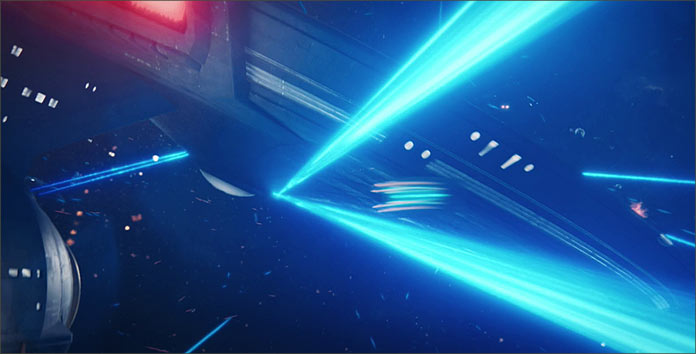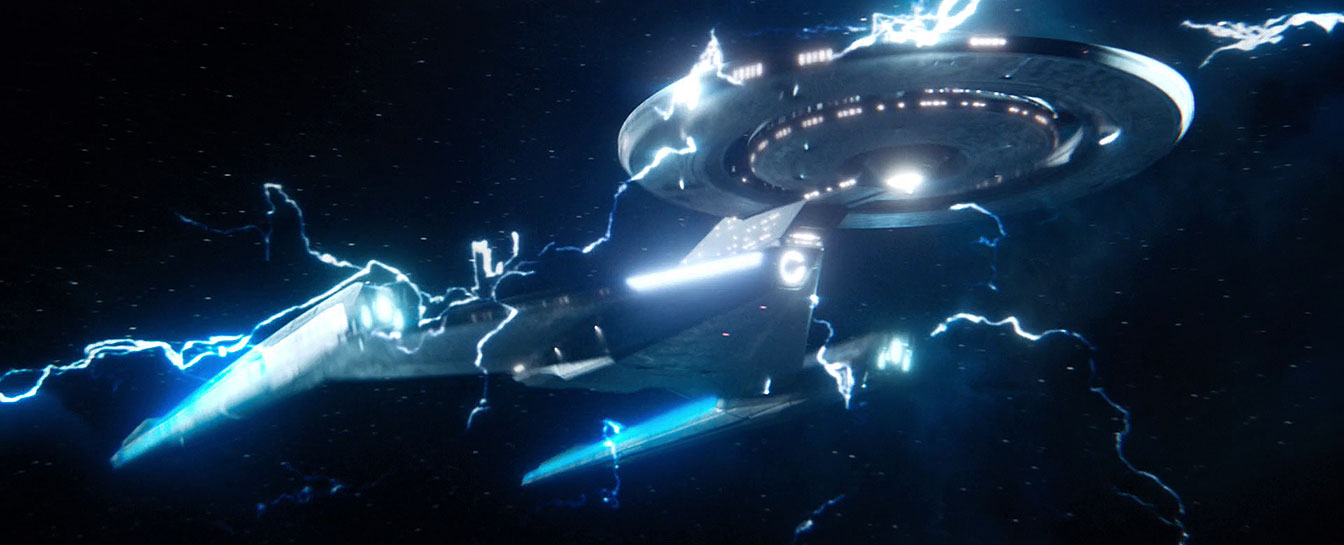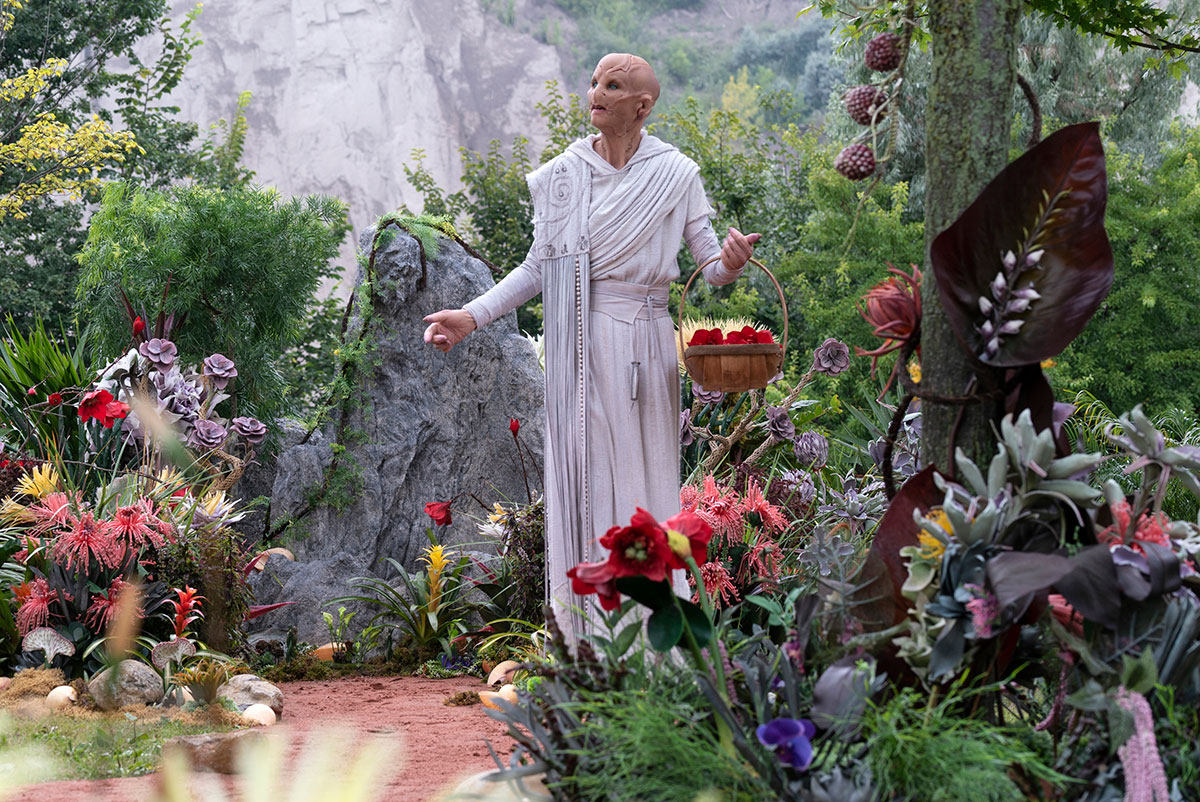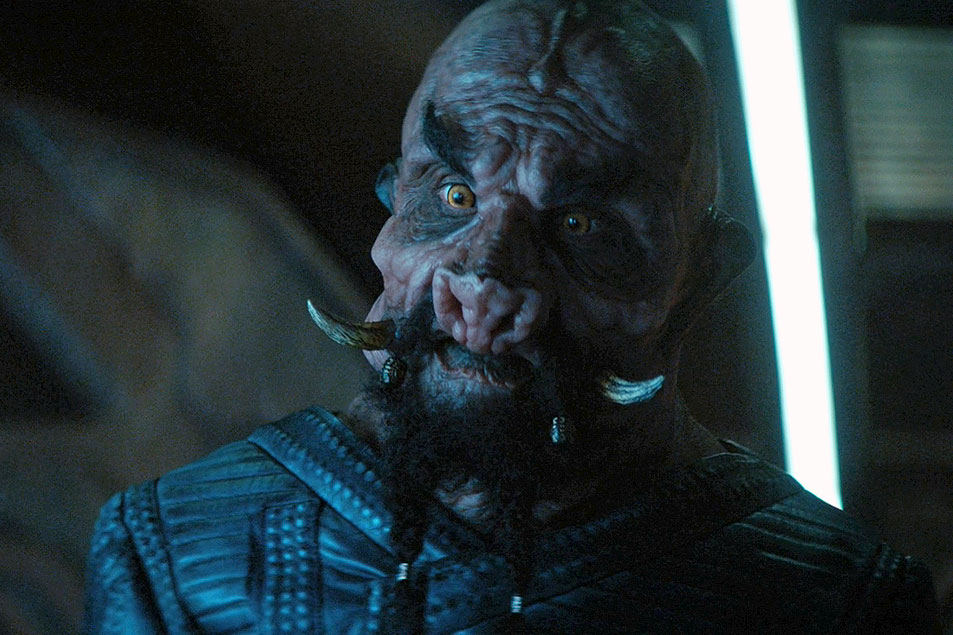One of the more interesting components of Star Trek: Discovery has been the sound design of the series, with the team bringing not only familiar sounds from decades of Trek history to a modern presentation, but also creating a complete soundscape of immersive audio from all of the USS Discovery crew’s adventures.
As Discovery Season 2 came to a close in late April, supervising sound editor Matthew Taylor and lead sound designer Tim Farrell from the WB Sound team spoke to A Sound Effect about much of the new audio created for the year.
Among a swath of other topics, Farrell shared some insight about how the Discovery spore drive sound effect was created:
The spore drive is made from a number of things. TONSTURM put out a library called Whoosh a while ago. Then they made all of these weird processed versions of them for The Whoosh Processed. They used a Kyma to make these weird, growly whooshes from a bullroarer. That became one of the main elements.
The spore engine does this wub-wub-wub-wub kind of thing. Back in Season 1, I was sitting there with another effects editor and I was saying the spore drive needed to do this ‘Three Stooges’-esk wub-wub-wub-wub thing. We thought it was funny so I actually recorded my voice doing that and we sped it up and pitched it and put it in. So in the spore drive, the high-pitched spinning element is me doing my best Curly impression.
Then, there are some massive booms and other weird sounds. There’s a great library from SoundMorph called TimeFlux. It has some cool, granular sounds. There’s a duck sound that I slowed down in there. And seaweed against a submarine hull. There’s this really cool recording I have of ice breaking on a frozen lake. It makes these great ‘power-down’ sounds.
We don’t have as much time to record as we would like. We tend to seek out good libraries and find cool material. It’s about finding sounds that have character and won’t turn into white noise in the mix.

He also went into detail about the components of starship weaponry sound, heard extensively in the “Such Sweet Sorrow” season finale.
For the shields, I pulled a lot of spark sounds. There was a lot of material that I created for the spores that didn’t make it into the final. They sounded sparky and crackly. Those were the result of a lot of plug-in chain processing. So I ended up using those and I put a comb filter on it. MeldaProduction has this amazing comb filter that sounds awesome. So, just with the default setting, the sound of sparks become these great shields. It kind of gives it a nice buzz on top and you get the sharp transients from the sparks. That ended up becoming a lot of the shields.
The energy-based weapons were mostly created last season. One thing to note is that when the phasers shoot, there’s this screaming sound. That was a Wilhelm scream that I processed the heck out of.
The curious time crystals, which played a big role into “Through the Valley of Shadows,” had their own unique audio background…
I found these obsidian chimes that make a cool tinkling sound. I pitched those way down and it made a cool, elongated metallic sound.
…as did the mysterious Red Angel, an otherworldy figure characterized by its strange appearances before its final identity was made known to viewers.
Because of the image, we tried to create an ethereal vibe. There was such chaos before she showed up and so we wanted to carve out this moment of quiet. There’s a heart beat sound that I created from slowed-down Godzilla footsteps. There’s a choir and chimes slowed down. There’s a magic bubble pop sound that I slowed way down.
I love slowing down sounds until they almost break. It creates these weird, tonal textures that are really fun.
Farrell also revealed that Saru’s peaceful homeworld, Kaminar, was filled with nature sounds from all walks of life… including bird sounds sourced from Uhura’s computer console in the Original Series.
I wanted that place to have an otherworldly quality to it but also feel familiar. You have to come up with alien crickets and alien birds. These were a seafaring people and so I wanted to have seagulls, but not use seagulls. I tried to use a lot of sea related sources and modulate those until they felt alien and sounded like weird cicadas and bird calls. I created bird calls from reeds that I made from blades of grass.
I spent a lot of time making these amazing cricket sounds from dolphin clicks that I sped up. It was so cool because they’re crickets but they aren’t. Then you put them in the track and bring them down and add the music and they sound like crickets. I probably could’ve just used crickets!
My favorite sound from that episode came from an old recording I had from the Original Series. They gave us all of this wonderful original material and some of Uhura’s beeps have these really great bird-like qualities. Those are all throughout Kaminar as birds, but they are actually old computer noises from the ‘60s.
Reaching back to some of the sounds heard throughout Season 1, Farrell commented on how familiar sounds from Star Trek: The Next Generation made their way into Discovery, despite the time discrepancy between the show’s two eras.
Someone complained because we used some of the ship beeps from The Next Generation. I actually did that on purpose because Discovery is a new ship, so I put a few in there just for fun, thinking that these beeps were being tested out on this new ship. We were told that this ship is the future of Starfleet. It was like a test ship. So we put a few of The Next Generation beeps in just for fun and fans definitely noticed.
I was thinking about who came up with the sounds of everything on the Starfleet ships. Was it people like [us], sitting there designing all of the beeps for the ships? I bet they were recycling sounds. I will say, though, that every sound I pulled I processed in some way, usually a bit of pitch shifting, so that it was close to the original sound but not quite it.
Taylor shared an interesting note about alien vocal manipulation, including the fact that Tellarite audio includes subtle notes of trombone music.
There was a Short Treks episode that featured [a Tellarite] character, and we had to ADR all of his lines; the mask he was wearing looked fantastic but unfortunately restricted his mouth movement, therefore there were issues with diction. It made his performance sound lispy, and that is not the vocal quality they wanted for this character, so we had to go back and loop him.
Then, I pitched him down and combined that with some trombone parts I played. I have a series of trombone growls that I mapped against his performance. It is very subtle. Then, I ran that through the Infected Mushroom Manipulator to come up with a subtle output for that. Then I combined those three layers.
![]()
For the full interview, which includes interesting notes on how sounds from how a trip to Iceland added depth to a variety of Discovery audio effects, the desire to recreate classic Enterprise sounds for the visit to Captain Pike’s starship, and much more, head over to A Sound Effect to read more.



